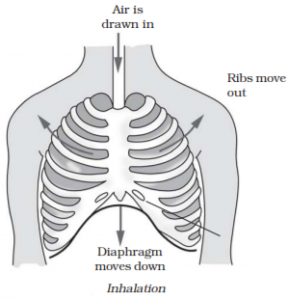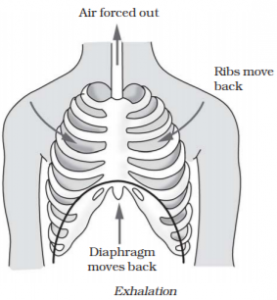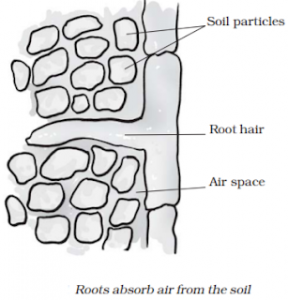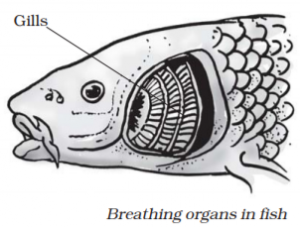Notes For All Chapters Science Class 7
Study Material and Notes of Ch 6 Respiration in Organisms Class 7th Science
Topics in the chapter
Cellular Respiration
Types of Respiration
Breathing and Exchange of Gases
Respiration in Plants
Respiration in Microorganisms
Respiration in Aquatic animals
Cellular Respiration
→ It is the process in which food is broken down in the cell to release energy.
→ It occurs in the cells of all living organisms.
Two types of Respiration
(i) Aerobic respiration
It is the process of breakdown of food in the presence of oxygen.
It occurs in all organisms.
It leads to production of carbon dioxide, water, and energy.
(ii) Anaerobic respiration
→ It is the process of breakdown of food in the absence of oxygen.
Yeast, bacteria, human muscle cells, etc. respire anaerobically.
→ In yeast cells, anaerobic respiration leads to production of alcohol and carbon dioxide.
→ During heavy exercise, our muscles respire anaerobically to provide energy to muscle cells.
→ This leads to accumulation of lactic acid that causes muscle cramps and thus, pain in body.
Breathing and Exchange of Gases (Respiration)
→ Respiration is the process of release of energy from the breakdown of organic substances.
→ It involves the exchange of oxygen from atmosphere and carbon dioxide produced in the body.
→ The breathing involves two processes: Inhalation and exhalation.
Inhalation
→ During inhalation, the diaphragm moves down and the ribs move upwards and outwards, thereby increasing the space in the chest cavity. This leads to the movement of air inside the lungs.
Exhalation
→ During exhalation, the diaphragm moves to its former position and the ribs move downwards and inwards, thereby reducing the size of the chest cavity.
→ This leads to the movement of air out of the lungs.
Respiration in Plants
→ Plants respire through tiny pores present on their leaves surface called stomata.
→ Oxygen enters the plant, while carbon dioxide leaves the plant through these pores.
→ Roots of plants respire through air spaces present in the soil.
Respiration
→ All living organisms require a continuous supply of energy for carrying out various life activities.
→ Cellular respiration is the process of releasing energy from the breakdown of organic substances.
→ The released energy is stored in the form of ATP.
→ ATP is the energy currency of cell.
→ The process of cellular respiration occurs in cytoplasm and mitochondria.
→ It involves the consumption of oxygen and liberation of CO2 and water.
→ The equation of respiration is
C6H12O6 + 6O2 → 6CO2 + 6H2O + Energy
Respiration in microorganisms
→ Amoeba respires through surface of the skin by the process known as diffusion.
→ Respiration in land animals
→ A cockroach has small openings on the sides of its body, which are known as spiracles.
→ The oxygen rich-air enters through spiracles.
→ The spiracles are connected to a network of tubes, called tracheae, for gaseous exchange.
→ Earthworms breathe through the surface of their moist skin.
→ In animals like cows, dog, buffaloes and cats, the respiratory organs and the process of breathing are similar to those in human.
Respiration in aquatic animals
→ Frogs respire through both lungs and their skin.
→ Fish have special structure called gills for breathing.
NCERT Solutions of Respiration in Organisms Class 7






Thank you didi you let me to understand this chapter,I think that you are the best Science teacher for class 7
Thank you
Mansi didi